New Delhi, Apr 30 (PTI) Extending its winning run for the third straight day, gold prices were up by another Rs 55 to trade at over three-month high of Rs 27,475 per ten grammes at the bullion market today on sustained buying by jewellers to meet wedding season demand amid firming trend overseas.
Silver, however, met with resistance and traded lower by Rs 200 to Rs 37,400 per kg.
Traders said continued buying by jewellers, driven by ongoing marriage season and a firming global trend mainly boosted the sentiment here.
Gold in London, which normally sets price trend on the domestic front, rose by 0.17 per cent to USD 1,206.60 an ounce and silver by 0.57 per cent to USD 16.63 an ounce.
Besides, deprecating rupee against the dollar that made the imports costlier and shifting of funds from weakening equity also supported the uptrend, they added.
In the national capital, gold of 99.9 and 99.5 per cent purity gained Rs 55 each to Rs 27,475 and Rs 27,325 per ten gramme, respectively. It had gained Rs 370 in the previous two sessions.
New Delhi, Apr 30 (PTI) The Lok Sabha saw protests by the Congress and Aam Aadmi Party over an incident in Moga area of Punjab in which a 13-year-old girl died and her mother was seriously injured after they jumped out of a moving bus to escape molestation.
Members of both the parties from Punjab stormed the well of the House denouncing the Akali Dal-BJP government in the state over the law and order situation.
Ravneet Singh Bittu and Santokh Chaudhary (Congress) Dharmveer Gandhi and Bhagwant Mann trooped into the Well after their efforts to raise it were unsuccessful.
Speaker Sumitra Mahajan said they could raise the issue during Zero Hour in the evening.
As the protests were unrelenting, the Speaker adjourned the House for five minutes.
Reports said the girl and her mother jumped off a moving bus in Punjab’s Moga district to avoid being sexually assaulted by the conductor’s assistant, after the driver refused to stop the bus and the conductor did not come to their help.
New Delhi, Apr 30 (PTI) The 24-hour transport strike began today, affecting normal life in several parts of the country including in Kerala and Karnataka, even as the Centre asked private operators and employees of state transport authorities to call off their strike.
In Kerala, public transport buses, taxis and auto- rickshaws were off the roads, although private vehicles were plying.
The strike has been called jointly by national level road transport organisations representing both public and private sector workers which are affiliated to central trade unions like AITUC, CITU, BMS, INTUC, HMS, AICCTU, LPF and state-level outfits in protest against the proposed Road Transport and Safety Bill, 2015.
Road Transport and Highways Minister Nitin Gadkari appealed for calling off the strike, terming their concerns as ‘premature’. He said that wide consultations would be held with all stakeholders on the bill.
Commuters in Thiruvananthapuram, who depend on Kerala State Transport Corporation buses, had tough time reaching their work places as the buses did not operate.
No untoward incident has been reported from any part of the state since the strike began at midnight last night.
Examinations being conducted by various universities in the state have been postponed due to the strike.
Services of public transport buses and auto rickshaws were also affected in different parts of Karnataka.
Incidents of stone pelting on public transport buses were reported from different parts of the state including Bengaluru, Hubballi, Bellary and Raichur, Mysuru.
Transport department officials said they are plying buses based on the requirement as the number of passengers coming to bus stands is scarce, adding that they are also trying to convince the employees to attend to duty and not to cause hindrance to public. .
Washington, Apr 29 (PTI) The threat of landslides and mudslides remains high in the earthquake-hit Nepal in the coming weeks, and the risk is likely to increase when the monsoon rains arrive this summer, scientists have warned.
The region at highest risk for landslides and mudslides is the mountainous area along the Nepal-Tibet border, north of Kathmandu and west of Mount Everest, directly above the fault rupture, according to researchers at the University of Michigan (U-M).
U-M geomorphologist Marin Clark and two colleagues have assessed the landslide hazard in Nepal following Saturday’s magnitude-7.9 earthquake.
They looked for locations where landslides likely occurred during the earthquake, as well as places that are at high risk in the coming weeks and months.
The analysis found tens of thousands of locations at high risk, Clark said.
“The majority of them, we expect, have already happened and came down all at once with the shaking on Saturday,” she said.
“But there will still be slopes that have not yet failed but were weakened. So there will be a continued risk during aftershocks and with the recent rainfall, and again when the monsoon rains arrive this summer,” said Clark.
Information from the U-M-led study is being used to help prioritise both satellite observations and the analysis of data from those satellites, said Clark, an associate professor in the U-M Department of Earth and Environmental Sciences.
“The satellites looked first at places where lots of people live, including Kathmandu and the foothills areas to the south,” Clark said.
“Those areas do not look significantly impacted by landsliding, but we’re worried about the high country,” she said.
The highest-risk zone is at elevations above 8,200 feet in a region that covers 17,550 square miles.
Cloud cover has blocked observation of much of that region since Saturday’s earthquake, said Clark.
But news stories and social media reports of landslides in Nepal’s Gorka District and Langtang Valley are consistent with the team’s assessment, which showed that those areas are at high risk, she said.
Remote villages are scattered throughout the high-risk zone, which also contains the main highway that connects Kathmandu and Tibet. The area is popular with trekkers and mountaineers, as well.
The team’s assessment of the landslide risk was based on a computer analysis that looked at earthquake shaking, slope steepness and the strength of various rock types.
The death toll in Nepal’s devastating earthquake has crossed 5,000 with more than 8,000 people injured.
Mumbai, Apr 29 (PTI) Shiv Sena’s Trimbak Tupe was today elected Aurangabad Mayor and BJP’s Pramod Rathod deputy mayor, with the ruling alliance in Maharashtra reaching a power sharing formula in the largest civic body in Marathwada.
BJP, which had put up a candidate for the mayoral poll after initial talks between the two parties did not yield a ‘satisfactory’ solution for power sharing, pulled out of the mayoral race.
Tupe bagged 71 votes in the house of 113 members, defeating dalit corporator Gangadhar Dhage of MIM, who polled 26 votes. Bahujan Samaj Party (BSP), which has 5 corporators in the civic body, backed Tupe.Congress candidate Afsar Khan got 13 votes.
Tupe, who became the 20th Mayor of Aurangabad, said his priorities will be to provide clean water, good roads and improve sanitation in the city.
Rathod who join BJP three months, got 70 votes for the deputy mayor’s post, defeating MIM’s Feroz Khan who secured 26 votes. Congress candidate Bhausaheb Jagtap got 13 votes.
BJP MLA and party’s in-charge for municipal polls in Aurangabad Atul Save said BJP decided to withdraw its nominee Raju Shinde from the mayoral race “in the larger social interest”.
There were reports that both the parties have reached an understanding on power sharing in the civic body.
Sena has 29 and BJP 22 corporators in the Aurangabad civic body.
While devastating earthquake in Nepal and parts of India, right up to Delhi, has sent a stark natural reminder about following the safe and secure living structures, the growing urbanisation is leading to high growth in the high rise buildings, with Mumbai having the maximum number of buildings with 16-25 floors and upwards.
According to a joint Assocham-DTZ study on “Sky is the limit: High Rise building- safety, Security & Disaster Management”, the average number of floors in commercial high rise buildings of Delhi-NCR, Mumbai and Bengaluru are 6 to 15. In the next higher segments of 16 to 25 floors and 26 to 35 floors, Mumbai has higher number of buildings as compared to Delhi-NCR and Bengaluru.
With the growing urbanization, both commercial and residential segments have witnessed a high growth rate with respect to high rise buildings. The residential segment makes up for ? of the total high rise stock in the three major cities of the country- Delhi-NCR, Mumbai and Bengaluru, reveals the joint study.
Mushrooming growth of high rise buildings has raised new security and safety concerns, especially in the backdrop of the latest devastating tragedy in Nepal and parts of eastern India. “It is a new challenge which must be faced in a holistic manner so that as a nation, we remain alert and well -prepared to brave any natural calamity with minimum or no less,” Assocham Secretary General D S Rawat said in a statement while releasing the study.
Three metro cities of Delhi-NCR, Mumbai and Bengaluru have the highest concentration of high rise buildings and fall under seismic zone IV (high damage risk zone), III (moderate damage risk zone) and II (low damage risk zone) respectively, according the study.
As per the National Building code of India, India is divided into five seismic zones. The zone V is the highest risk zone where earthquakes of having intensity of 9 plus on the Richter scale can take place. Earthquakes of intensity 8 to 9 can be experienced in zone IV whereas earthquake can occur between 6 and 8 on the Richter scale in zone III of India.
“Mumbai has the maximum stock of high rise commercial buildings due to the severe space crunch in the city. The city has no option but to grow vertically to accommodate future urbanization because of lack of open space. The residential high rise buildings have also displayed a similar growth trend to commercial high rises,” adds the study.
Similar to commercial segment, the average number of floors in residential high rise building is 6 to 15 floors. However, residential is also seeing appetite for scaling more heights. Mumbai contributes 75% of total stock of residential buildings with 16 to 25 floors and 91% of total stock of residential buildings with 26 to 35 floors in Delhi-NCR, Mumbai and Bengaluru.
The paper points out that no development is complete without ensuring its safety. What is the point of creating a world class infrastructure without safety and security? Safety of people is of paramount importance as these vertical heights are being achieved and created by them and for them.
Rawat further said, to be better prepared and to mitigate we need a large pool of human resources both in the Government and non-government sectors and there is a great need for effective training and capacity building activities. Besides international best practices, there are several good practices in the country and variety of measures that needs to be shared. Additionally, issues of up-scaling will have to be addressed.
“Not only tier-I but tier II and III cities such as Bhubaneshwar, Chandigarh, Lucknow, Gwalior, jaipur, Nagpur, Meerut, Kochi, Indore, Patna, Gaya, Ranchi and Udaipur are also going vertical especially in the residential space. A large number of IT/ ITES companies are moving to Tier II and III cities in search of cheaper real estate and manpower. This will drive the demand for commercial as well as residential real estate. Most of the builders have launched high rise residential projects in these cities on the back of growing demand,” highlighted the study.
As per the National Building Code of India all high rise buildings should have the following attributes to be earthquake-resistant:
Good Structural Configuration: Its size, shape and structural system carrying loads are such that they ensure a direct and smooth flow of inertia forces to the ground.
Lateral Strength: The maximum lateral (horizontal) force that it can resist is such that the damage induced in it does not result in collapse.
Adequate Stiffness:Its lateral load resisting system is such that the earthquake-induced deformations in it do not damage its contents under low-to-moderate shaking.
Good Ductility: Its capacity to undergo large deformations under severe earthquake shaking even after yielding, is improved by favourable design and detailing strategies.
New Delhi, Apr 29 (PTI) The Centre has offered to send its officers on deputation to north eastern states to help them overcome manpower shortage and execution of policy decisions.
“I understand that you have acute shortage of officers at middle level due to low intake of officers in civil services from 1992 to 2006.
“The state governments may like to utilise the experience of the Central Secretariat Service (CSS) officers at appropriate level on deputation basis,” Department of Personnel and Training (DoPT) Secretary Sanjay Kothari said in a letter to chief secretaries of Tripura, Nagaland, Mizoram, Meghalaya, Manipur, Assam, Arunachal Pradesh and Sikkim.
The CSS is one of the earliest organised services in the country and is an important constituent of the central government machinery.
Officers of the service provide a strong and permanent set up of middle level functionaries to the central government and contribute in policy formulation and its execution.
“The arrangement will enrich the officers with the required field experience at ground level in the execution of various schemes and policies and make them understand issues in a better way which will in turn improve their capacities,” Kothari said.
He has asked the state governments willing to take CSS officers on deputation to identify vacancy and tenure of posting and convey the same to the DoPT.
“This department will circulate the vacancies among CSS officers and nominate a panel of selected officers for deputation to state government and you can choose the suitable officer from the panel,” the letter said.
There are about 2,200 Group A CSS officers.
New Delhi, Apr 29 (PTI) The National Research Development Corporation (NRDC) has proposed to develop a technology data bank in the country.
Under the ‘Make in India’ initiative, it also proposes to scout for technologies to be acquired, demonstrate high risk technologies in PPP mode and extend angel funding for promising technologies, Minister of State of Science and Technology Y S Chowdary said in a written reply in Lok Sabha.
He said that as the Digital India programme entails making available all databases and information electronically, the corporation has “proposed to develop an Indian technology data bank”.
He said the corporation has also proposed adoption of a gram panchayat and promote innovative technologies therein for socio-economic transformation.
To a related question, he said the corporation is also being advised to raise its income from commercial activities to promote domestic research and development growth.
New Delhi, Apr 27 (PTI) A BJP member today questioned the relevance of TV programmes showing self-styled godmen asking people to wear certain types of clothes or eat sweets for good luck.
Mansingh Ram Patel (BJP) said in the age of science and technology when people are hooked to television for latest updates, they see “these babas” (religious figures) on the channels asking people to wear certain types of clothes for good luck.
He said some of them even ask people to eat certain types of sweetmeat for better luck and asked why should so much space be given to them on the channels.
Raising the issue during Zero Hour, he also referred to surrogate advertisements by liquor companies selling CDs and club soda and sought a ban on them.
Another BJP member Keshav Prasad demanded a central law against cow slaughter. Seeking government grants for ‘gau shalas’ (cow shelters), he said the people working there should be given honorarium.
Pressing for a ban on slaughter houses, he said dairy products should be encouraged so that cows are protected.
Badruddin Ajmal (AIUDF) referred to the recent killing of some labourers from Assam in Meghalaya and said people from the state were often targeted by militant groups in the neighbouring states of the Northeast.
New Delhi, Apr 29 (PTI) The government today said that India has emerged as a leading nation in disaster response, after having very swiftly directed its rescue and relief efforts in quake-struck Nepal.
Minister of State for Home Kiren Rijiju said that Indian planes were already on their way to Nepal in less than an hour after Prime Minister Narendra Modi chaired a high level meeting last Saturday to assess the situation.
Speaking in the Question Hour, Rijiju also told Rajya Sabha members that technology was extensively used by the country to respond to natural calamities and the 10,000- strong National Disaster Response Force was ready to meet any situation round the clock.
Responding to questions by members on India’s preparedness, Rijiju said that Rs 61,220 crore has been allotted to the State Disaster Response Fund (SDRF) for the period 2015-20 to provide assistance to people affected by natural calamities.
He said 58.6 percent of India’s land was prone to earthquake, 8.5 per cent vulnerable to cyclone and 5 per cent to floods, as per vulnerability Atlas of India published by Building Materials and Technology Promotion Council under the Housing and Urban Poverty Alleviation ministry.
Rijiju also said that the government has not appointed any agency to estimate the economic losses from disasters.
He said the United Nations Office for Disaster Risk Reduction’s Global Assessment Report on Disaster Risk Reduction 2015, the risk profile in India estimates that average annual loss from multi-hazarad disasters in India is approximately 9.8 billion dollars per year. Of this, the average annual loss from floods is 7.4 billion dollars.
The Minister however added that these figures are not vetted by the government.
Further in his reply, he said that damage and losses due to natural disasters are assessed by the state governments concerned, as they were primarily responsible for managing the situation after any natural disaster.



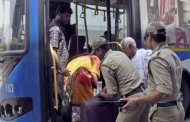

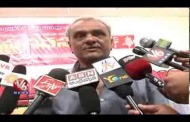
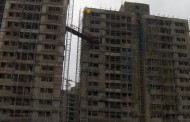
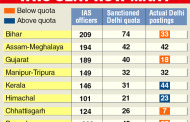
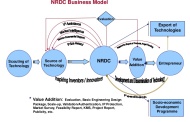

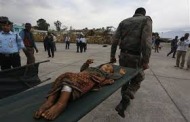





Recent Comments